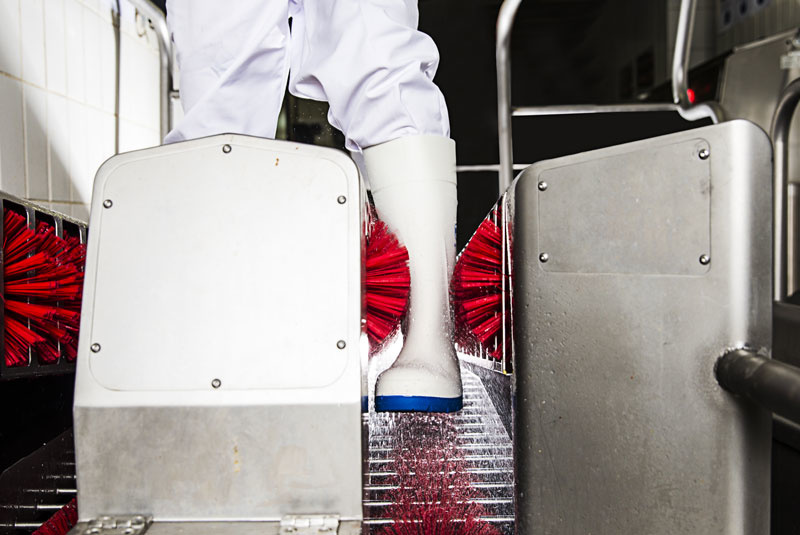How to choose the right food industry boots?
The food processing industry is one of the most demanding industries when talking about hygiene and occupational safety and health. Employers in this industry should not only vouch for food safety, they also have to guard over a safe working environment for their employees. Companies that choose for qualitative and certified personal protective equipment (PPE) can save a lot of money, for example when purchasing safety boots.
Nathalie Vereecken, R&D Manager at Bekina Boots, gives us 5 tips that help you to identify qualitative food industry boots.


CHOOSE SRC CERTIFIED
SLIP RESISTANT BOOTS
A whopping 15% of the accidents on the work floor are caused by slips and tricks, frequently resulting in prolonged back-, knee- and wrist pains. So the importance of slip resistant food industry boots speaks for itself.
Especially the grip and the profile of the sole are very important. Professionals in the food industry are wise enough to choose food industry boots that have a SRC certification for slip resistance, which means that the boots are tested for that property in an accredited test lab.

DON’T UNDERESTIMATE THE IMPORTANCE
OF LIGHTWEIGHT BOOTS
The weight of food industry boots has a direct impact on the comfort one experiences whilst wearing. Food workers spend a significant part of their working day standing upright, which can result in an intense feeling of fatigue in the lower back and legs. In the long term this is negatively influencing their productivity. It is proven that food workers with lightweight safety boots are experiencing significantly less fatigue.
In contrast to what most people think, it isn’t the protective metal toecap that makes most food industry boots so heavy. It is the material the boots are made of that determines the weight. For example, food industry boots that are made of NEOTANE are phenomenally lighter than PVC or rubber boots.


CHECK THE INSULATION PROPERTIES
Cold feet aren’t just unhealthy, they also have a negative influence on the moral of your employees. Most food industry boots offer thermal insulation down to -20°C/-4°F or even down to -40°C/°F. Some manufacturers claim to have food industry boots that offer thermal insulation down to -70°C! Be careful with such claims and always ask your supplier for official certificates.
NEOTANE food industry boots are praised by food companies because of their superior thermal insulation properties compared with pvc or rubber boots.

GO FOR FOOD INDUSTRY BOOTS
WITH COLOUR CODING
Colour coding is an efficient method to prevent cross-contamination between the different production units of a food factory. That’s why it’s always interesting to choose food industry boots that are available in different colours. Every production unit can have its specific colour and one can not enter another production unit with the wrong coloured boots.

CLEANING AND DISINFECTION
OF THE BOOTS
Every type of food industry boot reacts differently on exposure to chemical substances, depending on the material the boot is made of. Before you order new food industry boots, ask for a chemical resistance list.
It happens quite often in food factories that boots start to leak because they aren’t resistant to the used cleaning and disinfection products. Trustable safety boots manufacturers can always provide you a chemical resistance list.








